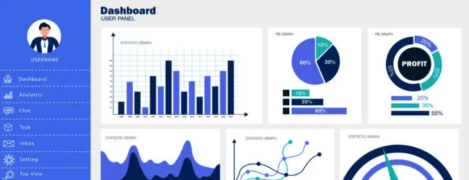Identifying and Addressing Pain Points in the Customer Journey

Customer pain points are moments of friction, frustration, or unmet needs that customers encounter during their interactions with your business. Addressing these pain points is crucial to improving Customer Experience (CX) and fostering loyalty. For small teams, identifying and resolving these challenges can be the key to standing out in a competitive market.
In this guide, we’ll explore how to pinpoint pain points in the customer journey and strategies to resolve them effectively.
What Are Customer Pain Points?
Pain points are obstacles or challenges that hinder customers from achieving their goals when interacting with your business. These issues can arise at any stage of the customer journey, from awareness to post-purchase.
Common Types of Pain Points:
- Functional Pain Points: Issues with the product or service, such as unclear instructions or bugs.
- Emotional Pain Points: Frustrations related to how customers feel during interactions, such as lack of empathy in customer support.
- Process Pain Points: Inefficiencies in systems or workflows, such as a lengthy checkout process.
- Communication Pain Points: Poor or inconsistent communication, such as unresponsive support or unclear messaging.
Why Addressing Pain Points is Important
1. Improves Customer Satisfaction
Eliminating obstacles creates a smoother experience, leading to happier customers.
2. Increases Retention
Customers who encounter fewer frustrations are more likely to stay loyal to your brand.
3. Boosts Revenue
Satisfied customers are more likely to make repeat purchases and recommend your business to others.
How to Identify Customer Pain Points
1. Map the Customer Journey
Understand the steps customers take when interacting with your business. Use a customer journey map to visualize touchpoints, behaviors, and emotions.
Example: A small SaaS company maps the onboarding journey to identify where new users struggle with setup.
2. Gather Customer Feedback
Use direct feedback to uncover frustrations or areas of improvement.
- Surveys: Ask customers about their experiences and satisfaction.
- Interviews: Conduct one-on-one discussions to dive deeper into pain points.
- Social Media Listening: Monitor customer mentions and reviews online.
Example: A boutique retailer discovers through reviews that customers are unhappy with slow shipping times.
3. Monitor Support Channels
Analyze customer support tickets, emails, and chat logs to spot recurring issues.
- What questions are customers asking repeatedly?
- Are there complaints about specific products or processes?
Example: A food delivery app identifies that most support tickets involve difficulty with promo code redemption.
4. Analyze Data and Metrics
Track CX-related metrics to highlight problem areas.
- Customer Satisfaction (CSAT): Low scores may point to issues at specific touchpoints.
- Customer Effort Score (CES): High scores indicate customers are finding processes too difficult.
- Churn Rate: A high churn rate may reveal dissatisfaction during onboarding or post-purchase stages.
Example: A subscription box service notices increased churn during the first three months and investigates onboarding.
5. Conduct Usability Testing
Observe customers using your product or service to identify where they encounter difficulties.
Example: A small e-commerce store hosts a usability session and finds that customers struggle to find the shipping options on the checkout page.
Strategies to Address Customer Pain Points
1. Simplify Processes
Streamline workflows and reduce unnecessary steps to make interactions easier.
- Simplify forms and checkout processes.
- Automate repetitive tasks to save time for customers.
Example: A small business adds a guest checkout option, reducing cart abandonment rates.
2. Improve Communication
Ensure customers receive clear and consistent information at every touchpoint.
- Use automated email sequences for updates.
- Provide FAQs or self-service resources.
Example: A SaaS company creates tutorial videos to address common onboarding challenges.
3. Enhance Customer Support
Offer prompt and empathetic support to resolve issues quickly.
- Train support staff to address customer concerns effectively.
- Use live chat or AI-powered chatbots for real-time assistance.
Example: A local service provider integrates live chat, reducing response times and improving customer satisfaction.
4. Personalize the Experience
Tailor interactions to meet individual customer needs and preferences.
- Use data to recommend products or services.
- Offer personalized support based on customer history.
Example: A small fitness app uses user data to send personalized workout recommendations.
5. Test and Iterate
Regularly test solutions to ensure they effectively address pain points. Collect ongoing feedback and refine as needed.
Example: A subscription service introduces a quiz-based onboarding experience and adjusts it based on feedback from new users.
Real-World Example
Scenario: A small online clothing retailer struggles with high cart abandonment rates.
Steps Taken:
- Conducted customer surveys to understand the issue.
- Discovered customers were frustrated with unclear shipping fees during checkout.
- Simplified the checkout process to include upfront shipping cost information.
Outcome: Cart abandonment rates decreased by 20%, and overall customer satisfaction improved.
Tools to Help Identify and Address Pain Points
1. Customer Feedback Platforms
- Typeform: For creating engaging customer surveys.
- SurveyMonkey: For collecting and analyzing feedback.
2. Journey Mapping Tools
- Lucidchart: For visualizing customer journeys.
- Miro: For collaborative journey mapping.
3. Analytics Tools
- Google Analytics: For tracking user behavior on your website.
- Hotjar: For heatmaps and session recordings to see where users struggle.
4. Customer Support Software
- Zendesk: For managing and analyzing support tickets.
- Intercom: For real-time customer support and insights.
Conclusion
Identifying and addressing pain points in the customer journey is essential to delivering exceptional experiences that drive satisfaction and loyalty. By mapping the journey, gathering feedback, and implementing targeted solutions, small teams can resolve friction and create smoother interactions.
Start small: choose one stage of the customer journey, identify pain points, and focus on resolving them. Continuous improvements will ensure your CX efforts yield tangible results for your business.
Ready to address your customer pain points? Begin by mapping the journey and listening to customer feedback—it’s the first step toward delivering outstanding experiences!







